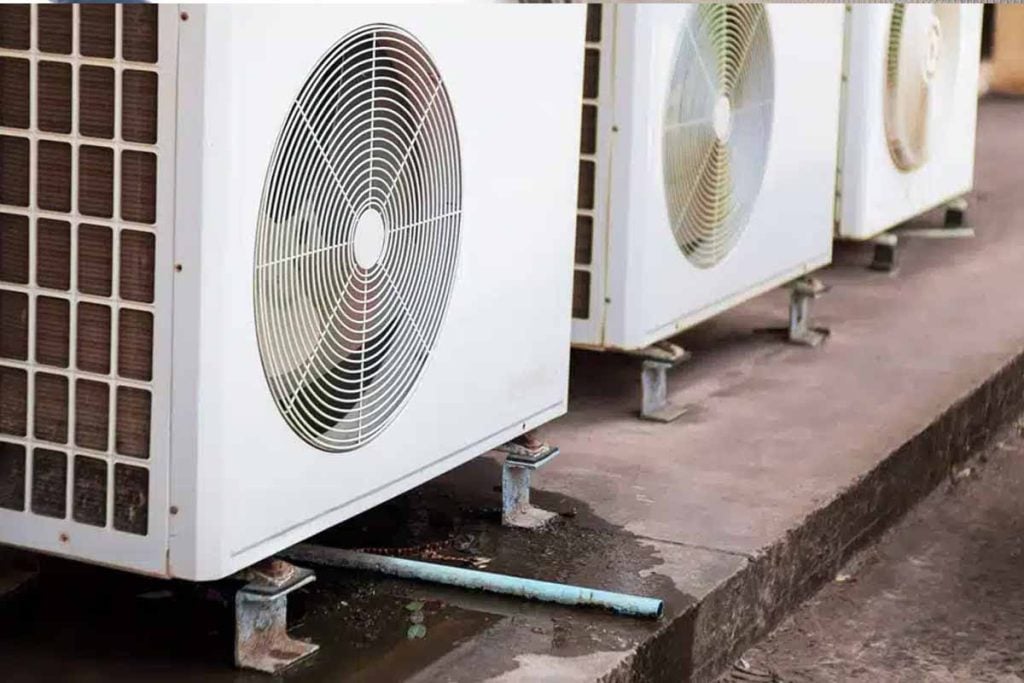That steady drip you hear hides a small, practical treasure waiting in plain sight. The clear water your cooling unit sheds is not waste but a versatile resource for home care. Free of limescale, it helps tools last longer and leaves no marks. While you should never drink it, you can put it to smart use with simple habits. Because air conditioners pull moisture from indoor air, the resulting water is clean enough for many chores.
Why water from air conditioners is different
Cooling pulls humidity from warm indoor air as it passes over cold evaporator coils. Moisture condenses and flows toward the drain, leaving dissolved salts, limestone, and most impurities behind. That process yields water close to distilled quality. It dries without rings, scale, haze, or gritty residue on delicate surfaces.
Purity does not equal potability. Ducts, pans, and hoses can harbor mold, bacteria, and biofilm, which the water can pick up. Containers add contaminants, too. Treat it as non-potable, like gray water. Use clean collection gear and wash it often to limit growth and maintain reliable quality.
From air conditioners, quantity depends on humidity, unit size, and runtime. During peak summer, many homes collect several gallons daily. That scale makes reuse worthwhile. A bucket under the outlet works, yet a dedicated can or tank keeps the routine tidy. Rinse containers and store them out of sun.
Simple ways to collect and store it safely
Start with placement. Find the drain outlet or hose and set a clean can, bottle, or bucket beneath it. Wipe the lip to remove grime. Fit a short tube if splashing occurs. Mark containers for non-potable use. A shaded spot slows algal growth and keeps temperatures lower.
Give the container a quick wash every few days with mild soap, then rinse well. Scrub the outlet gently to break film. If odors appear, rotate containers. A mesh screen stops debris and mosquitoes. Label the date on bigger tanks so you refresh stock and avoid stagnant pools.
Expect output to vary widely. Humid rooms and long cycles increase flow; short cycles reduce it. Even modest setups can fill a medium container each day. With air conditioners, consistent summer use creates a steady stream, so a simple schedule for emptying, straining, and refilling keeps everything safe and convenient.
Smarter cleaning that leaves no marks
Mineral-free water shines on glass. Use it for windows, mirrors, and screens, since it dries spotless. Spray, wipe with microfiber, then buff quickly. No limescale marks, no cloudy edges. Stainless appliances, chrome fixtures, and glossy tiles also look better because nothing crystallizes after evaporation or dulls polished finishes.
Detailing fans save time on the driveway. After washing with regular soap, reserve this water for the final rinse. Paint and glass dry without rings, so you skip chamois scrubbing. Over time, sprayers and nozzles stay clear, since dissolved minerals that clog parts are absent from the stream.
Appliance care improves, too. Fill steam cleaners and fabric steamers to avoid scale and extend performance. Mix concentrates with this water when labels suggest demineralized bases, because formulas act predictably. Mention air conditioners when teaching kids the routine; the drip is a built-in source that makes maintenance simple and cheap.
Appliance care powered by air conditioners water
Steam irons last longer when scale never forms. Use this water to fill the reservoir and keep vents open. Dark fabrics avoid white specks that hard water leaves behind. The soleplate glides better because deposits do not build. You save money, because distilled bottles remain on the store shelf.
Humidifiers gain efficiency with demineralized water. No more chalky dust drifting around vents or furniture. Tanks rinse faster, and cleaning cycles become rare. Sensors and transducers hold calibration because crystals never cake on them. For homes seeking steadier humidity, this switch reduces fuss and improves overall indoor comfort.
Kettles and coffee makers collect far less scale when filled with this water. While taste is personal, lower buildup means fewer descaling sessions and longer element life. For brewing experiments, minerals come from the recipe, not the tap. People using air conditioners gain a free, steady supply during hot months.
Plant care and gentle irrigation tips
This water lacks chlorine and variable mineral loads, which many plants appreciate. Yet it also lacks nutrients. For everyday watering, mix it with tap water or add balanced fertilizer to avoid deficiencies. Sensitive species benefit most, while rugged shrubs barely notice the difference beyond cleaner leaves and fewer hard-water spots.
Carnivorous plants, many orchids, and tropicals adapted to rainfall thrive with very low minerals. Seedlings tolerate it well for early growth, provided nutrients arrive later. Misting boosts humidity without white dust near vents. Leaves shine after a gentle wipe, since no residue forms to dull color or block stomata.
Gardeners gain predictable water quality all season. Try these uses when air conditioners run daily: seed germination trays, hydroponic reservoirs with measured salts, leaf cleaning before pest checks, gentle misting for humidity lovers, and small decorative fountains. Consistency helps sensitive setups, because minerals do not swing with municipal treatment changes.
One small habit that saves water and extends gear life
Collecting condensate turns waste into help for cleaning, appliances, and plants. The routine takes minutes, yet the benefits stack up: fewer streaks, less scale, and happier gear. Treat it as non-potable, keep containers clean, and store them in shade. With air conditioners humming through peak heat, that steady drip becomes a free, sustainable supply you can trust for practical tasks. Small changes matter, and this one fits into busy days without fuss.
